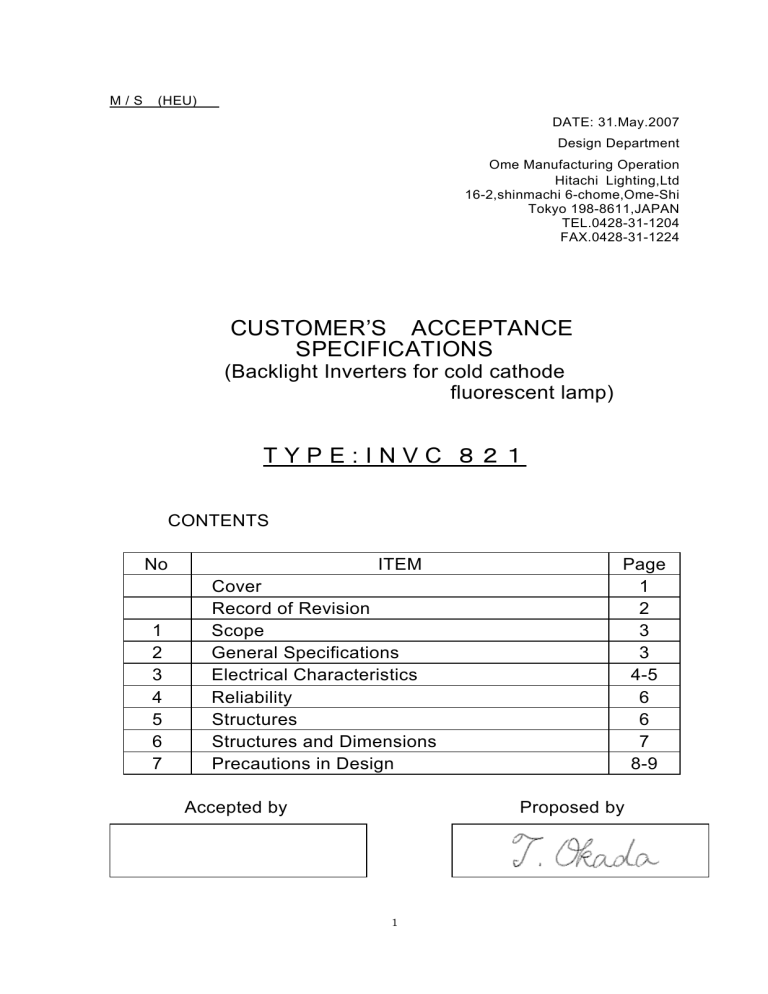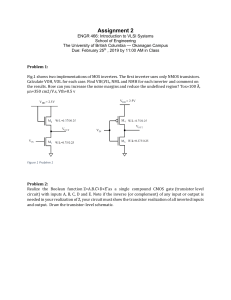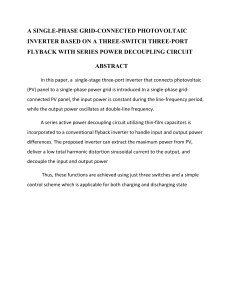
M/S (HEU) DATE: 31.May.2007 Design Department Ome Manufacturing Operation Hitachi Lighting,Ltd 16-2,shinmachi 6-chome,Ome-Shi Tokyo 198-8611,JAPAN TEL.0428-31-1204 FAX.0428-31-1224 CUSTOMER’S ACCEPTANCE SPECIFICATIONS (Backlight Inverters for cold cathode fluorescent lamp) T Y P E : I N V C 821 CONTENTS No 1 2 3 4 5 6 7 ITEM Cover Record of Revision Scope General Specifications Electrical Characteristics Reliability Structures Structures and Dimensions Precautions in Design Accepted by Page 1 2 3 3 4-5 6 6 7 8-9 Proposed by 1 Record of Revision DATE 31.May.2007 PAGE SUMMARY NEW 2 Date Code & Rev. 1. Scope 1.1 This specification shall apply to inverter INVC821 to operate a cold cathode fluorescent lamp in the liquid-crystal display (LCD). 1.2 This inverter INVC821 is designed and adjusted for SX19V001 LCD-module. (Hitachi Displays type name) 2. General Specifications General specifications and condition for use are shown below. Item Specification Output Power Nominal 3.0W Cooling condition Free air flow Efficiency 85 % min. Weight 20 g max. Ambient temperature Operating 0~50deg (direct ambient air of Inverter board) Stock -20~70deg Humidity 90 % RH.max. Corrosive gasses Not acceptable Audible sound level 35 dB max. at 30cm MTBF 60000Hrs. min. 3 3. Electrical Characteristics 3.1.Maximum rating Items Min. Typ. Max. unit Input voltage 0.5 --- 7.0 V Remarks 3.2.Operationg Characteristics SX19V001 LCD module Item AT=25deg.C Min Typ Max Unit Input voltage 4.5 5.0 5.5 V Input current 460 510 560 mA at 5.0V Rush current --- --- 3.0 A at 5.0V Lamp current 3.7 4.2 4.7 mA at 5.0V Lamp power --- 1.7 --- W at 5.0V Main frequency 55 75 85 kHz at 5.0V 4 Remarks All characteristics are measured by our certain test equipment. The measurement of condition should be stable lighting (more than 30 minutes after startup :at 25+/-1deg.C and no breath of wind) (The measurement of input rush current is exception) . (1) The electrical characteristics are measured as we show on measurement diagram Fig.1. Vin=5.0V. (2) As we show on measurement diagram Fig.1, the test equipment shall be V1:DC Volt meter (Class0.5) A1:DC Current type2016(Y.E.W) or FLUKE45(FLUKE) meter(Class0.5) A2:AC Current Vin:PW16-5ADP(Kenwood) . (3) The line length of between the lamp and CN2(high voltage)is less than 150mm. A1 INVERTER CN2 CN1 3 Vin 1 Hi L V1 C A2 2 4 M GND Fig.1 Wiring 3.3. Wiring Diagram CN1 CN2 ON/OFF 1 CFL ON/OFF 4 GND CFL INVERTER L INVC821 GND C 2 GND M DC 5V IN 3 Vin 1 Hi Fig.2 Wiring Diagram 5 meter 4.Reliability Item Test condition Low temp. operate 0deg.C, 5.0V, 100%output, 500Hrs High temp. operate 50deg.C, 5.0V, 100%output, 500Hrs Low temp. stock -20deg.C, 500Hrs High temp. stock 70deg.C, 500Hrs High temp. and high humidity 50deg.C, 90% 5.0V, 100%output, 500Hrs Cyclic temp. operate 0deg.C - 25deg.C - 50deg.C 1Hr each 5.0V, 100%output, 50cycles Thermal shock -20deg.C Vibration 3G, 30~200Hz, 0.5Hrs,xyz-axis Impact test 50G,xyz-axis - 70deg.C, 0.5Hrs each 50cycles 5.Structures 5.1 Dimensions Reference to drawing P.7 5.2 Interface specification Input connector CN1:S3B-PH-K-S(JST) Pin No. Symbol Comment 1 CFL ON/OFF ON :“L” Vol<0.8V, Iol=2mA OFF:“H” Vin+/-2V or open 2 GND GND 3 Vin DC5.0V Output connector CN2:IL-G-4P-S3L2-SA(JAE) Pin No. Symbol 1 Hi 2 -- 3 -- 4 GND 6 90+/-0.5 (10) 70+/-0.2 18.5+/- 0.5 (10) 4 1 CN1 1 CN2 3 Input Connecter 2.0MAX Output Connecter 2.5MAX Fig.3 .Date code 10MAX 2- φ2.8+0.1/-0 Dimensional Outline : ex ”31E7” 7 1.6 22+/- 0.5 (3.5) 6.Structures and Dimensions 7.Precautions in Design 7.1 Please turn off the power supply of the inverter before the out put connector (CN2) be put in or put off. Because voltage of the output connector is very high. 7.2 The high-voltage wiring of lamps may affect the characteristics of this product even in the presence of a slight stray capacity of 1 to few pF. So, please check whatever the below points have fully considered. (1) Please use UL1330 equivalents as inverter output leads and keep length within 150mm. (2) Please keep the length of wiring as short as possible and at the same time avoid binding high-voltage leads together and fitting high-voltage leads near the shield. (3) Consider the electric potential of the parts adjacent to a wire because it greatly affects the electric characteristics and startup characteristics. 7.3 In the case of put in and put off the connector(CN1), please switch off power supply of the inverter. If power supply is operating, it will be possible that the inverter break down. 7.4 Please pay attention in using the inverter. Because the transformer in the inverter is weak to impact. 7.5 If it was exposed to thermal shock(out of order), come to have a crack itself. 7.6 Please do not give it any changes, such as reworking it, applying and hardening with adhesives, molding with resin, fixing with tape. 7.7 Please make a tight connection output and input connector.(If inverter’s connecter contact was imperfection, the components of inverter have high temperature and break down.) 8 7.8 Pay attention as printed circuit board is bent, and not adding excessive pressure when printed circuit board is built in. (Deterioration and the damage of component are caused, and movements of inverter are out of order.) 9



